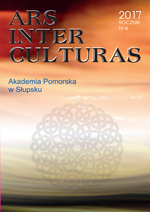УКРАИНСКО-ПОЛЬСКИЕ СРЕДНЕВЕКОВЫЕ ЛИРОВИДНЫЕ ИНСТРУМЕНТЫ: ПОПЫТКА СРАВНИТЕЛЬНОГО АНАЛИЗА
UKRAINIAN-POLISH MEDIEVAL LYRE-SHAPED INSTRUMENTS: AN ATTEMPT OF COMPARATIVE ANALYSIS
Author(s): Irina ZinkivSubject(s): Cultural history, Music, Sociology of Art
Published by: Wydawnictwo Naukowe Akademii Pomorskiej w Słupsku
Keywords: Slavic lyres; Gdańsk; gęśle of the 13th century; Zvenigorod’s gusli of the 12th century; Novgorod’s gusli of the 11th century; lyre-shaped gusli; original instrumental prototype
Summary/Abstract: This paper proposes considerations with regard to early Slavic lyres of the Middle Ages–theso-calledlyre-shapedgusliofthe11-13th centuries.Threearchaeologicalspec- imens are studied discovered in Poland (Gdańsk), Ukraine (Zvenigorod) and Russia (Nov- gorod). Zvenigorod’s instrument (the first third of the XII century) is more than a century older than Gdansk’s one (the third quarter of the 13th century). Polish and Ukrainian instru- ments have approximately the same shape of the structure’s upper part. Based on the frag- ment of the Zvenigorod’s gusli upper part the author managed to reconstruct their appear- ance, approximate dimensions and supposed appearance of missing parts. I believe that Zvenigorod’s instrument is structurally closer to Gdańsk’s gusli compared to the Novgorod’s one. Fixation of the strings lower ends in Polish and, presumably, Ukrainian instruments, is based on the principle of a more archaic movable lock, in contrast to the immovable one in Novgorod’s instrument.The territorial features of individual structural parts and their decor indicate local differ- ences in the structure and symbolism of instruments in the Slavic Middle Ages of 11-13th centuries reflecting the local specificity of the Slavs’ world outlook.
Journal: Ars Inter Culturas
- Issue Year: 2018
- Issue No: 7
- Page Range: 65-78
- Page Count: 14
- Language: Russian

